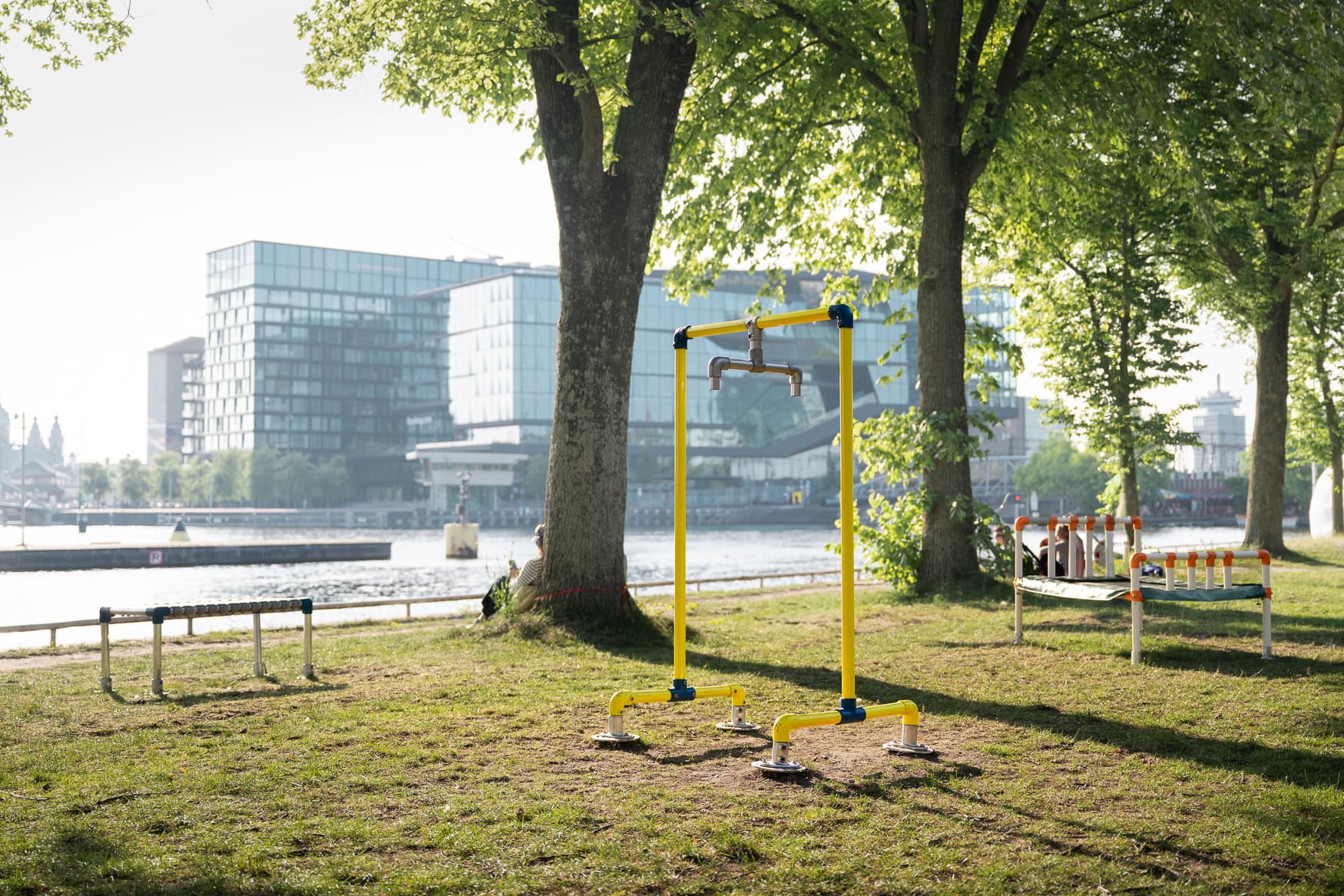Jin Lee
Studio for Immediate Spaces
Biography
Jin Lee is an Amsterdam-based artist working with interactive installations and playgrounds. Jin's practice explores the balance between seriousness and fun, using play to reveal contradictions and reframe what we overlook in daily life. Jin holds a BA from DesignLAB at Gerrit Rietveld Academie, where she graduated with Anyone’s Anything, a playground addressing social taboos through physical and visual play.

Te Huur: Furnished Territory In-Between
In the urban fabric of Amsterdam, where the housing crisis reshapes neighborhoods with relentless urgency, spaces once held by communities are slowly disappearing, fenced off, and forgotten, waiting years before being built anew. One such site is Fred. Roeskestraat 94a, previously home to a British school. Unlike other sites that remain abandoned, this space has been temporarily converted into a public area, with grass laid and ping pong tables installed, suggesting an effort to activate the site as a public space during its in-between phase. It begins with a question: what happens to the spaces between demolition and construction—between absence and being? This project responds to that quiet contradiction. It acknowledges the necessity of housing, while regretting the loss it brings—the vanishing of in-between spaces, of gathering, of play. It reveals a paradox: the pursuit of housing, a fundamental human need, simultaneously erodes the shared spaces where community life unfolds. The effort to resolve one social issue breeds another. As urgent responses to social issues unfold, new tensions inevitably arise. In this overlap of social issues, the playground becomes a symbolic and critical space. A stage where the everyday and the political intertwine through play—this playground performs a gesture of access, one that is destined to disappear due to construction. A playground is proposed to be built with scaffolding tubes—materials of transition, of construction. Its forms echo domestic furniture, evoking the intimacy of home furniture within the frame of something incomplete. By inviting people to play in this symbolic space, the playground becomes a site for dialogue, reflection, and re-engagement with the social contradictions embedded in our urban fabric. This is not just a playground, but a spatial manifesto. It squats the space with intention, questioning what it means to occupy, to play, to share a spatial proposition. It embodies the contradictions of our urban condition, inviting play as a form of dialogue—a way to collectively reflect on what is being built, and what is quietly being lost, to make the playscape how we care for the spaces that hold community, even in their in-between states.
